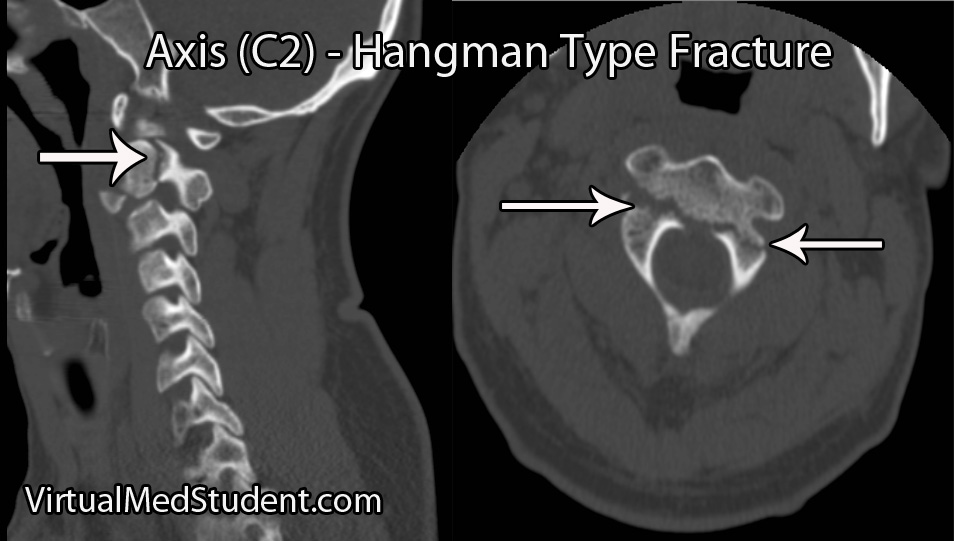Low pressure headache mri findings information
Home » headache » Low pressure headache mri findings information
Your Low pressure headache mri findings images are ready in this website. Low pressure headache mri findings are a topic that is being searched for and liked by netizens today. You can Get the Low pressure headache mri findings files here. Download all free photos.
If you’re searching for low pressure headache mri findings images information linked to the low pressure headache mri findings interest, you have come to the ideal blog. Our site frequently provides you with suggestions for refferencing the maximum quality video and picture content, please kindly search and find more informative video articles and graphics that match your interests.
Low Pressure Headache Mri Findings. Thin bilateral subdural fluid accumulation over the cerebral and cerebellar convexities is commonly seen in about 50 of patients. By very definition the opening CSF pressure is low below 60 mm H2O and often a dry tap is encountered. Specific headache types such as low pressure headache positional or cough headache with possible CSF flow obstruction Chiari malformation or colloid cyst meningitic features vasculitic features or cranial nerve neuropathies require specialist MRI protocols and should ideally be reviewed by a Neuroradiologist. Brain and occasionally spinal MRI studies with gadolinium enhancement should be undertaken.
 Dandy Walker Variant Radiology Reference Article Radiopaedia Org Radiology Dandy White Matter From no.pinterest.com
Dandy Walker Variant Radiology Reference Article Radiopaedia Org Radiology Dandy White Matter From no.pinterest.com
Brain and occasionally spinal MRI studies with gadolinium enhancement should be undertaken. ALL patients with suspected intracranial hypotension should have cranial brain MRI with contrast to look for these findings and for. Specific headache types such as low pressure headache positional or cough headache with possible CSF flow obstruction Chiari malformation or colloid cyst meningitic features vasculitic features or cranial nerve neuropathies require specialist MRI protocols and should ideally be reviewed by a Neuroradiologist. Fluid analysis is normal. Intracranial hypotension IH is a treatable cause of persistent headaches. Findings are partly influenced by cerebral displacement.
Intracranial hypotension syndrome is characterized by a decrease in cerebrospinal fluid CSF pressure to less than 60 mm H2O associated with occipital headache radiating to the frontal and temporal zones.
Fluid analysis is normal. A A coronal and B axial T1 MRI with gadolinium demonstrating diffuse pachymeningeal. Postural headache resembling a low CSF pressure headache in accordance with the IHS criteria. ALL patients with suspected intracranial hypotension should have cranial brain MRI with contrast to look for these findings and for. We present three patients who complained of postural headache related to different types of intracranial hypotension. Findings are partly influenced by cerebral displacement.
 Source: pinterest.com
Source: pinterest.com
Spontaneous or primary and secondary but presenting the same findings on brain magnetic resonance imaging. Low pressure headaches are caused by low cerebral spinal fluid CSF pressure or volume and they may be spontaneous or provoked for example after lumbar puncture inadvertent dural puncture during spinal anaesthesia or neurosurgical procedures. 33 Patients with any headache disorder had a higher rate of any intracranial abnormality as compared with the nonheadache population 29 vs 22 including major 11 vs 10 and minor 17 vs 13 categories. How are low pressure headaches diagnosed. This clever mneumonic helps physicians to remember the findings on cranial brain MRI imaging in intracranial hypotension low CSF volume and pressure in the head from spinal CSF cerebrospinal fluid leaks.
 Source: pinterest.com
Source: pinterest.com
A patient with symptoms of low intracranial pressure including postural headache and hyperacusis. Lumbar puncture and CSF analysis are done if headache is progressive and findings suggest idiopathic intracranial hypertension eg transient obscuration of vision diplopia pulsatile intracranial tinnitus or chronic meningitis eg persistent low-grade fever cranial neuropathies cognitive impairment lethargy vomiting. Brain MRI with injected contrast dye may reveal enhancement of the meninges lining of the brain and sometimes indicate evidence of the brain sagging downward from the skull toward the neck. By very definition the opening CSF pressure is low below 60 mm H2O and often a dry tap is encountered. They typically do not cause mass effect and represent small hygromas.
 Source: pinterest.com
Source: pinterest.com
A A coronal and B axial T1 MRI with gadolinium demonstrating diffuse pachymeningeal. How are low pressure headaches diagnosed. Low pressure headaches are caused by low cerebral spinal fluid CSF pressure or volume and they may be spontaneous or provoked for example after lumbar puncture inadvertent dural puncture. Persistent cerebrospinal fluid CSF leak at a lumbar puncture LP site may cause IH. Honnigsvag reviewed MRI findings in a populationbased crosssectional study of adults aged 5065 who had participated in previous NordTrøndelag Health Studies HUNT.
 Source: pinterest.com
Source: pinterest.com
Brain MRI with injected contrast dye may reveal enhancement of the meninges lining of the brain and sometimes indicate evidence of the brain sagging downward from the skull toward the neck. Thin bilateral subdural fluid accumulation over the cerebral and cerebellar convexities is commonly seen in about 50 of patients. Findings are partly influenced by cerebral displacement. Brain MRI with injected contrast dye may reveal enhancement of the meninges lining of the brain and sometimes indicate evidence of the brain sagging downward from the skull toward the neck. ALL patients with suspected intracranial hypotension should have cranial brain MRI with contrast to look for these findings and for.
 Source: pinterest.com
Source: pinterest.com
Spontaneous intracranial hypotension SIH is a syndrome with variable causes clinical presentations and MRI findings which are characterized by depletion of CSF and resultant low CSF pressure 1 4. We present three patients who complained of postural headache related to different types of intracranial hypotension. Brain MRI with injected contrast dye may reveal enhancement of the meninges lining of the brain and sometimes indicate evidence of the brain sagging downward from the skull toward the neck. Spontaneous intracranial hypotension SIH is a syndrome with variable causes clinical presentations and MRI findings which are characterized by depletion of CSF and resultant low CSF pressure 1 4. By very definition the opening CSF pressure is low below 60 mm H2O and often a dry tap is encountered.
 Source: pinterest.com
Source: pinterest.com
We present three patients who complained of postural headache related to different types of intracranial hypotension. ALL patients with suspected intracranial hypotension should have cranial brain MRI with contrast to look for these findings and for. Low pressure headaches are caused by low cerebral spinal fluid CSF pressure or volume and they may be spontaneous or provoked for example after lumbar puncture inadvertent dural puncture during spinal anaesthesia or neurosurgical procedures. The MRI findings represent the sum of loss of CSF volume and compensatory changes in response to the leakage. Many MRI findings of SIH reported in previous studies 1.
 Source: pinterest.com
Source: pinterest.com
Intracranial hypotension IH is a treatable cause of persistent headaches. Postural headache resembling a low CSF pressure headache in accordance with the IHS criteria. Radioisotope cisternography was performed 1 week later and no leak of CSF was found. A A coronal and B axial T1 MRI with gadolinium demonstrating diffuse pachymeningeal. We present postcontrast MRI of a patient with post-lumbar-puncture headache LPHA showing abnormal intense diffuse symmetric contiguous dural-meningeal pachymeningeal enhancement.
 Source: pinterest.com
Source: pinterest.com
They typically do not cause mass effect and represent small hygromas. 1 An MRI with gadolinium injection and an MR angiogram were performed showing mild enhancement of the meningeal structures especially on coronal T2 views Figures 1 and 2. Intracranial hypotension syndrome is characterized by a decrease in cerebrospinal fluid CSF pressure to less than 60 mm H2O associated with occipital headache radiating to the frontal and temporal zones. The condition may be frustrating to diagnose even when the cause is strongly suspected particularly in the less dramatic cases. Low pressure headaches are caused by low cerebral spinal fluid CSF pressure or volume and they may be spontaneous or provoked for example after lumbar puncture inadvertent dural puncture during spinal anaesthesia or neurosurgical procedures.
 Source: pinterest.com
Source: pinterest.com
We present postcontrast MRI of a patient with post-lumbar-puncture headache LPHA showing abnormal intense diffuse symmetric contiguous dural-meningeal pachymeningeal enhancement. Many MRI findings of SIH reported in previous studies 1. A A coronal and B axial T1 MRI with gadolinium demonstrating diffuse pachymeningeal. This clever mneumonic helps physicians to remember the findings on cranial brain MRI imaging in intracranial hypotension low CSF volume and pressure in the head from spinal CSF cerebrospinal fluid leaks. By very definition the opening CSF pressure is low below 60 mm H2O and often a dry tap is encountered.
 Source: no.pinterest.com
Source: no.pinterest.com
We present three patients who complained of postural headache related to different types of intracranial hypotension. Intracranial hypotension IH is a treatable cause of persistent headaches. Low pressure headaches are caused by low cerebral spinal fluid CSF pressure or volume and they may be spontaneous or provoked for example after lumbar puncture inadvertent dural puncture. Thin bilateral subdural fluid accumulation over the cerebral and cerebellar convexities is commonly seen in about 50 of patients. Brain MRI with injected contrast dye may reveal enhancement of the meninges lining of the brain and sometimes indicate evidence of the brain sagging downward from the skull toward the neck.
 Source: pinterest.com
Source: pinterest.com
How are low pressure headaches diagnosed. Findings are partly influenced by cerebral displacement. Lumbar puncture and CSF analysis are done if headache is progressive and findings suggest idiopathic intracranial hypertension eg transient obscuration of vision diplopia pulsatile intracranial tinnitus or chronic meningitis eg persistent low-grade fever cranial neuropathies cognitive impairment lethargy vomiting. Radioisotope cisternography was performed 1 week later and no leak of CSF was found. 1 An MRI with gadolinium injection and an MR angiogram were performed showing mild enhancement of the meningeal structures especially on coronal T2 views Figures 1 and 2.
 Source: in.pinterest.com
Source: in.pinterest.com
We present postcontrast MRI of a patient with post-lumbar-puncture headache LPHA showing abnormal intense diffuse symmetric contiguous dural-meningeal pachymeningeal enhancement. Persistent cerebrospinal fluid CSF leak at a lumbar puncture LP site may cause IH. 1 An MRI with gadolinium injection and an MR angiogram were performed showing mild enhancement of the meningeal structures especially on coronal T2 views Figures 1 and 2. Typical imaging findings consist of subdural fluid collections pachymeningeal enhancement pituitary hyperaemia and brain sagging but magnetic resonance imaging may be normal. We present postcontrast MRI of a patient with post-lumbar-puncture headache LPHA showing abnormal intense diffuse symmetric contiguous dural-meningeal pachymeningeal enhancement.
 Source: pinterest.com
Source: pinterest.com
Low pressure headaches are caused by low cerebral spinal fluid CSF pressure or volume and they may be spontaneous or provoked for example after lumbar puncture inadvertent dural puncture during spinal anaesthesia or neurosurgical procedures. Brain MRI with injected contrast dye may reveal enhancement of the meninges lining of the brain and sometimes indicate evidence of the brain sagging downward from the skull toward the neck. Intracranial hypotension IH is a treatable cause of persistent headaches. However the pressure may be normal especially with intermittent leaks and may vary tap to tap. Lumbar puncture and CSF analysis are done if headache is progressive and findings suggest idiopathic intracranial hypertension eg transient obscuration of vision diplopia pulsatile intracranial tinnitus or chronic meningitis eg persistent low-grade fever cranial neuropathies cognitive impairment lethargy vomiting.
 Source: tr.pinterest.com
Source: tr.pinterest.com
Thin bilateral subdural fluid accumulation over the cerebral and cerebellar convexities is commonly seen in about 50 of patients. We present postcontrast MRI of a patient with post-lumbar-puncture headache LPHA showing abnormal intense diffuse symmetric contiguous dural-meningeal pachymeningeal enhancement. Spontaneous or primary and secondary but presenting the same findings on brain magnetic resonance imaging. Brain MRI with injected contrast dye may reveal enhancement of the meninges lining of the brain and sometimes indicate evidence of the brain sagging downward from the skull toward the neck. How are low pressure headaches diagnosed.
 Source: pinterest.com
Source: pinterest.com
Lumbar puncture and CSF analysis are done if headache is progressive and findings suggest idiopathic intracranial hypertension eg transient obscuration of vision diplopia pulsatile intracranial tinnitus or chronic meningitis eg persistent low-grade fever cranial neuropathies cognitive impairment lethargy vomiting. The condition may be frustrating to diagnose even when the cause is strongly suspected particularly in the less dramatic cases. However the pressure may be normal especially with intermittent leaks and may vary tap to tap. A A coronal and B axial T1 MRI with gadolinium demonstrating diffuse pachymeningeal. 33 Patients with any headache disorder had a higher rate of any intracranial abnormality as compared with the nonheadache population 29 vs 22 including major 11 vs 10 and minor 17 vs 13 categories.
 Source: pinterest.com
Source: pinterest.com
Persistent cerebrospinal fluid CSF leak at a lumbar puncture LP site may cause IH. Postural headache resembling a low CSF pressure headache in accordance with the IHS criteria. Brain and occasionally spinal MRI studies with gadolinium enhancement should be undertaken. Intracranial hypotension IH is a treatable cause of persistent headaches. Persistent cerebrospinal fluid CSF leak at a lumbar puncture LP site may cause IH.
 Source: pinterest.com
Source: pinterest.com
ALL patients with suspected intracranial hypotension should have cranial brain MRI with contrast to look for these findings and for. Brain MRI with injected contrast dye may reveal enhancement of the meninges lining of the brain and sometimes indicate evidence of the brain sagging downward from the skull toward the neck. Intracranial hypotension IH is a treatable cause of persistent headaches. A patient with symptoms of low intracranial pressure including postural headache and hyperacusis. Postural headache resembling a low CSF pressure headache in accordance with the IHS criteria.
 Source: pinterest.com
Source: pinterest.com
Low pressure headaches are caused by low cerebral spinal fluid CSF pressure or volume and they may be spontaneous or provoked for example after lumbar puncture inadvertent dural puncture during spinal anaesthesia or neurosurgical procedures. Brain and occasionally spinal MRI studies with gadolinium enhancement should be undertaken. Thin bilateral subdural fluid accumulation over the cerebral and cerebellar convexities is commonly seen in about 50 of patients. 33 Patients with any headache disorder had a higher rate of any intracranial abnormality as compared with the nonheadache population 29 vs 22 including major 11 vs 10 and minor 17 vs 13 categories. We present postcontrast MRI of a patient with post-lumbar-puncture headache LPHA showing abnormal intense diffuse symmetric contiguous dural-meningeal pachymeningeal enhancement.
This site is an open community for users to do submittion their favorite wallpapers on the internet, all images or pictures in this website are for personal wallpaper use only, it is stricly prohibited to use this wallpaper for commercial purposes, if you are the author and find this image is shared without your permission, please kindly raise a DMCA report to Us.
If you find this site helpful, please support us by sharing this posts to your own social media accounts like Facebook, Instagram and so on or you can also bookmark this blog page with the title low pressure headache mri findings by using Ctrl + D for devices a laptop with a Windows operating system or Command + D for laptops with an Apple operating system. If you use a smartphone, you can also use the drawer menu of the browser you are using. Whether it’s a Windows, Mac, iOS or Android operating system, you will still be able to bookmark this website.

Category
Related By Category
- Headache during yoga information
- Popping sound in head with headache images
- Headache spanish images
- Sphenoid sinus headache images
- King of the hill peggys headache images
- Tonneau cover with headache rack information
- Clip art headache information
- Penn headache center images
- Waking up with stuffy nose and headache information
- Diamond headache clinic complaints images
